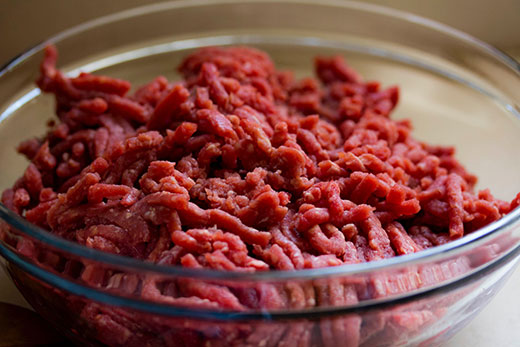
Color differences in ground meat is due to changes in the natural color pigments, enzyme activity and how much oxygen is present.
Food Safety Expert: Color not always indicator of safe ground beef
K-State’s Blakeslee says color is related to oxygen in the product
February 25, 2020
MANHATTAN, Kan. – Consumers who purchase ground beef from the grocery store expect the meat to be bright red, but sometimes the product may have a brown or purple color to it.
The off-color doesn’t automatically mean that the ground beef is bad, says K-State Research and Extension food safety specialist Karen Blakeslee. The differences in color usually indicate the amount of oxygen that is present in the product, as well as how long and what temperature the meat has been stored.
“Meat color is the first thing consumers look at for freshness,” Blakeslee said. “The color differences are due to changes in the natural color pigments, enzyme activity, and how much oxygen is present.”
After grinding, the surface of beef appears bright red, which is likely the point when the product contains the most oxygen. As oxygen decreases, uncooked ground beef will slowly change to dull red to tan and eventually brown.
Those changes occur primarily because of a loss of oxygen. Packaging slows the loss of oxygen, but the change in color continues to occur even if the product is stored in a refrigerator or other cold area.
Ground beef can maintain a bright red color internally even if the surface is brown.
Once the product is in the consumer’s home, Blakeslee said that one simple way to know if brown meat is still safe to cook and eat is to smell it. If it smells fresh, and the “freeze” or “consume by” date is current, then it’s probably okay to consume.
However, consumers may also choose to follow another common guideline: When in doubt, throw it out.
“Your nose can be one guide to food safety,” Blakeslee said. “If the meat no longer smells fresh, it should be thrown away. If you cannot use fresh ground meat before the date on the package, freeze it for later use.”
Blakeslee added that when cooking any ground meat, including beef, pork and lamb, always use a food thermometer to check for doneness; the color of the meat is not an indicator of doneness. Ground meat should reach a minimum temperature of 160 degrees F, she said.
K-State Research and Extension has published a fact sheet, called Fresh Ground Beef Color: A Consumer Guide, that will help consumers make good decisions about the safety of ground beef.
Blakeslee also publishes regular food safety tips and information online through the Extension Food Safety website at Kansas State University.

